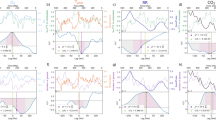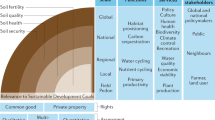Abstract
THE term biosphere was defined by J. B. Lamarck as the rough total of the matter of all living beings. The tenor of the term has greatly altered since. By biosphere, modern biologists mean the part of the Earth's crust (lithosphere and hydrosphere) and of the lower parts of the Earth's atmosphere (troposphere) where life is present, together with the living organisms themselves. Accordingly, the biosphere consists of living and non-living components. It is the total complex of soil, water, air and living organisms that forms a complete ecosystem. Many authorities even go a step further. They define the biosphere as “the space of our planet that is taken up by living beings” or as “that part of the Earth's crust, of its hydrosphere and atmosphere, that builds the environment for life” (compare Suess). Here, the biological components fall into the background and the notion biosphere has changed from biological into geobiochemical1.
This is a preview of subscription content, access via your institution
Access options
Subscribe to this journal
Receive 51 print issues and online access
$199.00 per year
only $3.90 per issue
Buy this article
- Purchase on Springer Link
- Instant access to full article PDF
Prices may be subject to local taxes which are calculated during checkout
Similar content being viewed by others
References
Florkin, M., Bull. Acad. Roy. Belg. Cl. Sci., 5e Serie, 51, 239 (1965).
Teilhard de Chardin, P., Man's Place in Nature, (Collins, London, 1966).
Author information
Authors and Affiliations
Rights and permissions
About this article
Cite this article
GILLARD, A. On the Terminology of Biosphere and Ecosphere. Nature 223, 500–501 (1969). https://doi.org/10.1038/223500a0
Received:
Issue Date:
DOI: https://doi.org/10.1038/223500a0
Comments
By submitting a comment you agree to abide by our Terms and Community Guidelines. If you find something abusive or that does not comply with our terms or guidelines please flag it as inappropriate.



